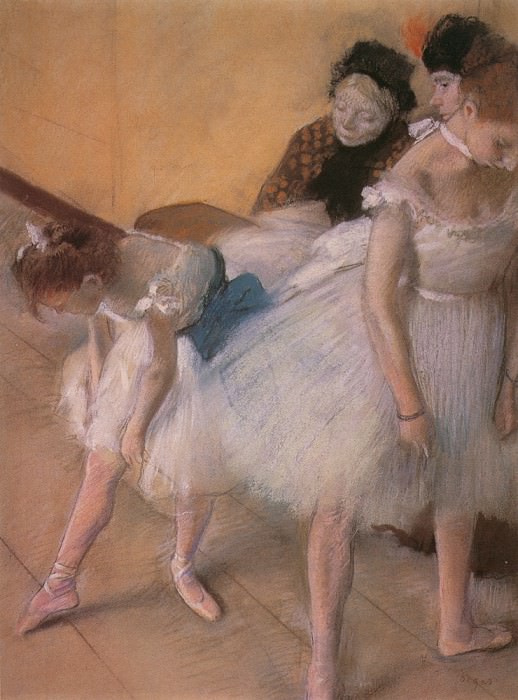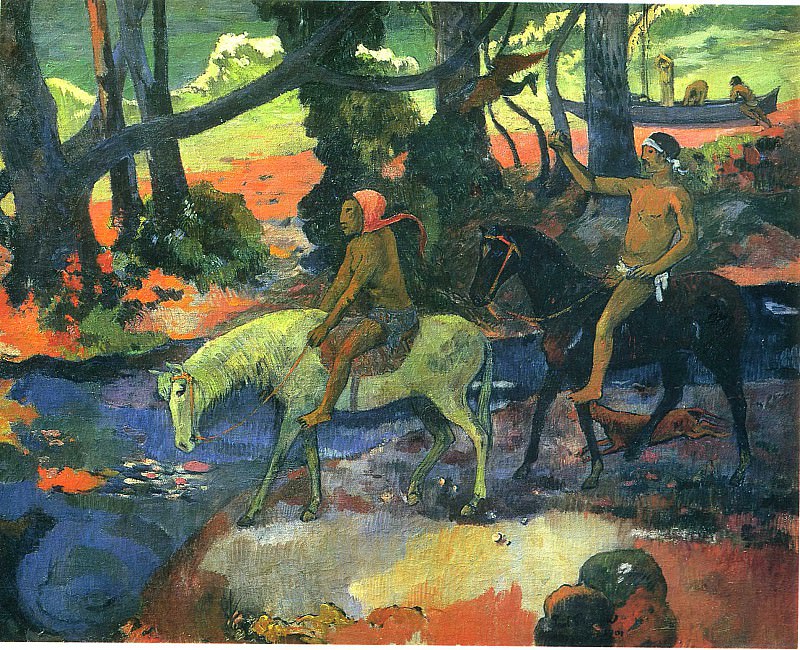Mary Cassatt: A Pioneering Vision in Impressionist Art
Mary Cassatt, an iconic figure in the world of Impressionist art, is celebrated for her profound contributions to the movement and her unique portrayal of the domestic and familial experiences of women. Her work, characterized by its intimate and tender depiction of women and children, defied the conventional boundaries of art in the late 19th and early 20th centuries. Cassatt's influence extends beyond her artistic achievements, touching upon themes of gender, social norms, and the evolving role of women in the arts.
Early Life and Artistic Formation
Born on May 22, 1844, in Allegheny City, Pennsylvania, Mary Cassatt was raised in a wealthy and culturally engaged family. Her early exposure to art came from her mother, who encouraged her artistic inclinations. Cassatt's family initially supported her desire to pursue art, but societal expectations for women at the time posed significant challenges. Despite these constraints, Cassatt's determination and passion led her to study at the Pennsylvania Academy of the Fine Arts in Philadelphia. Her education there was marked by both rigorous academic training and a burgeoning sense of independence in her artistic vision.
Cassatt's early career was shaped by her experiences in Paris, where she moved in 1866. The French capital was the epicenter of the art world, and Cassatt's exposure to its vibrant artistic community played a crucial role in shaping her style. During this period, she studied at the prestigious École des Beaux-Arts and came into contact with the leading artists of the time. The influence of the Impressionist movement, with its emphasis on capturing the fleeting effects of light and color, was particularly significant in Cassatt's development as an artist.
Integration into the Impressionist Movement
Mary Cassatt's integration into the Impressionist movement was both a personal and professional milestone. The Impressionists, a group of artists who challenged traditional artistic conventions, were known for their innovative techniques and their focus on capturing everyday moments. Cassatt's association with this movement was facilitated through her friendship with Edgar Degas, one of its leading figures. Degas's influence is evident in Cassatt's work, particularly in her approach to composition and her use of color.
Cassatt's paintings often featured scenes from domestic life, with a particular emphasis on the relationship between mothers and children. This focus was both a reflection of her own experiences and a commentary on the societal roles assigned to women. Her works, such as "The Child's Bath" and "Little Girl in a Blue Armchair," are celebrated for their intimate and affectionate portrayal of familial bonds. Through her art, Cassatt not only captured the nuances of everyday life but also contributed to the broader discourse on the role of women in society.
Innovative Techniques and Artistic Vision
Mary Cassatt's artistic techniques were marked by a keen attention to detail and a profound sensitivity to color and light. Her use of color was both bold and subtle, often employing vibrant hues to create a sense of warmth and intimacy. Cassatt's compositions were meticulously arranged, with a focus on capturing the essence of her subjects rather than adhering to strict realism. This approach was in line with the Impressionist ethos, which sought to convey the sensory experience of a moment rather than a precise representation.
One of Cassatt's notable innovations was her use of printmaking techniques, particularly in her work with drypoint and aquatint. These methods allowed her to explore new dimensions of texture and detail, further enriching her artistic repertoire. Her prints, often characterized by their delicate lines and rich tonal variations, complement her paintings and provide a broader understanding of her artistic range.
Themes and Subjects in Cassatt's Art
Mary Cassatt's art is distinguished by its focus on themes related to women and children. Her depictions of motherhood are particularly significant, offering a nuanced perspective on the experiences of women in the late 19th century. In works such as "Mother and Child" and "The Boating Party," Cassatt explores the emotional and physical dynamics of maternal relationships. These paintings are not merely representations but are imbued with a sense of tenderness and respect for the subject matter.
Cassatt's interest in the daily lives of women extended beyond motherhood. Her portrayals of women in leisure activities, such as reading or attending the theater, reflect a broader interest in women's roles and experiences. These works are significant not only for their artistic quality but also for their commentary on the social and cultural norms of the time.
Impact and Legacy
Mary Cassatt's impact on the art world extends far beyond her lifetime. Her pioneering role as a female artist in the Impressionist movement broke barriers and paved the way for future generations of women artists. Cassatt's work challenged traditional notions of art and gender, offering a new perspective on the everyday experiences of women and children.
Her legacy is evident in the continued appreciation of her work by art historians, critics, and the public. Exhibitions dedicated to Cassatt's art regularly draw attention to her contributions and ensure that her influence remains a vital part of the artistic discourse. Furthermore, Cassatt's work continues to inspire contemporary artists, who draw upon her innovative techniques and thematic focus to explore new artistic territories.
Conclusion
Mary Cassatt's contributions to the world of art are both profound and enduring. Her role as a pioneering Impressionist artist, combined with her focus on intimate and personal themes, has left a lasting impression on the art world. Cassatt's work remains a testament to her artistic vision and her commitment to capturing the complexities of human experience. As we continue to explore and appreciate her art, we gain not only insight into her unique perspective but also a deeper understanding of the evolving role of women in the arts.
Mary Cassatt, an iconic figure in the world of Impressionist art, is celebrated for her profound contributions to the movement and her unique portrayal of the domestic and familial experiences of women. Her work, characterized by its intimate and tender depiction of women and children, defied the conventional boundaries of art in the late 19th and early 20th centuries. Cassatt's influence extends beyond her artistic achievements, touching upon themes of gender, social norms, and the evolving role of women in the arts.
Early Life and Artistic Formation
Born on May 22, 1844, in Allegheny City, Pennsylvania, Mary Cassatt was raised in a wealthy and culturally engaged family. Her early exposure to art came from her mother, who encouraged her artistic inclinations. Cassatt's family initially supported her desire to pursue art, but societal expectations for women at the time posed significant challenges. Despite these constraints, Cassatt's determination and passion led her to study at the Pennsylvania Academy of the Fine Arts in Philadelphia. Her education there was marked by both rigorous academic training and a burgeoning sense of independence in her artistic vision.
Cassatt's early career was shaped by her experiences in Paris, where she moved in 1866. The French capital was the epicenter of the art world, and Cassatt's exposure to its vibrant artistic community played a crucial role in shaping her style. During this period, she studied at the prestigious École des Beaux-Arts and came into contact with the leading artists of the time. The influence of the Impressionist movement, with its emphasis on capturing the fleeting effects of light and color, was particularly significant in Cassatt's development as an artist.
Integration into the Impressionist Movement
Mary Cassatt's integration into the Impressionist movement was both a personal and professional milestone. The Impressionists, a group of artists who challenged traditional artistic conventions, were known for their innovative techniques and their focus on capturing everyday moments. Cassatt's association with this movement was facilitated through her friendship with Edgar Degas, one of its leading figures. Degas's influence is evident in Cassatt's work, particularly in her approach to composition and her use of color.
Cassatt's paintings often featured scenes from domestic life, with a particular emphasis on the relationship between mothers and children. This focus was both a reflection of her own experiences and a commentary on the societal roles assigned to women. Her works, such as "The Child's Bath" and "Little Girl in a Blue Armchair," are celebrated for their intimate and affectionate portrayal of familial bonds. Through her art, Cassatt not only captured the nuances of everyday life but also contributed to the broader discourse on the role of women in society.
Innovative Techniques and Artistic Vision
Mary Cassatt's artistic techniques were marked by a keen attention to detail and a profound sensitivity to color and light. Her use of color was both bold and subtle, often employing vibrant hues to create a sense of warmth and intimacy. Cassatt's compositions were meticulously arranged, with a focus on capturing the essence of her subjects rather than adhering to strict realism. This approach was in line with the Impressionist ethos, which sought to convey the sensory experience of a moment rather than a precise representation.
One of Cassatt's notable innovations was her use of printmaking techniques, particularly in her work with drypoint and aquatint. These methods allowed her to explore new dimensions of texture and detail, further enriching her artistic repertoire. Her prints, often characterized by their delicate lines and rich tonal variations, complement her paintings and provide a broader understanding of her artistic range.
Themes and Subjects in Cassatt's Art
Mary Cassatt's art is distinguished by its focus on themes related to women and children. Her depictions of motherhood are particularly significant, offering a nuanced perspective on the experiences of women in the late 19th century. In works such as "Mother and Child" and "The Boating Party," Cassatt explores the emotional and physical dynamics of maternal relationships. These paintings are not merely representations but are imbued with a sense of tenderness and respect for the subject matter.
Cassatt's interest in the daily lives of women extended beyond motherhood. Her portrayals of women in leisure activities, such as reading or attending the theater, reflect a broader interest in women's roles and experiences. These works are significant not only for their artistic quality but also for their commentary on the social and cultural norms of the time.
Impact and Legacy
Mary Cassatt's impact on the art world extends far beyond her lifetime. Her pioneering role as a female artist in the Impressionist movement broke barriers and paved the way for future generations of women artists. Cassatt's work challenged traditional notions of art and gender, offering a new perspective on the everyday experiences of women and children.
Her legacy is evident in the continued appreciation of her work by art historians, critics, and the public. Exhibitions dedicated to Cassatt's art regularly draw attention to her contributions and ensure that her influence remains a vital part of the artistic discourse. Furthermore, Cassatt's work continues to inspire contemporary artists, who draw upon her innovative techniques and thematic focus to explore new artistic territories.
Conclusion
Mary Cassatt's contributions to the world of art are both profound and enduring. Her role as a pioneering Impressionist artist, combined with her focus on intimate and personal themes, has left a lasting impression on the art world. Cassatt's work remains a testament to her artistic vision and her commitment to capturing the complexities of human experience. As we continue to explore and appreciate her art, we gain not only insight into her unique perspective but also a deeper understanding of the evolving role of women in the arts.














